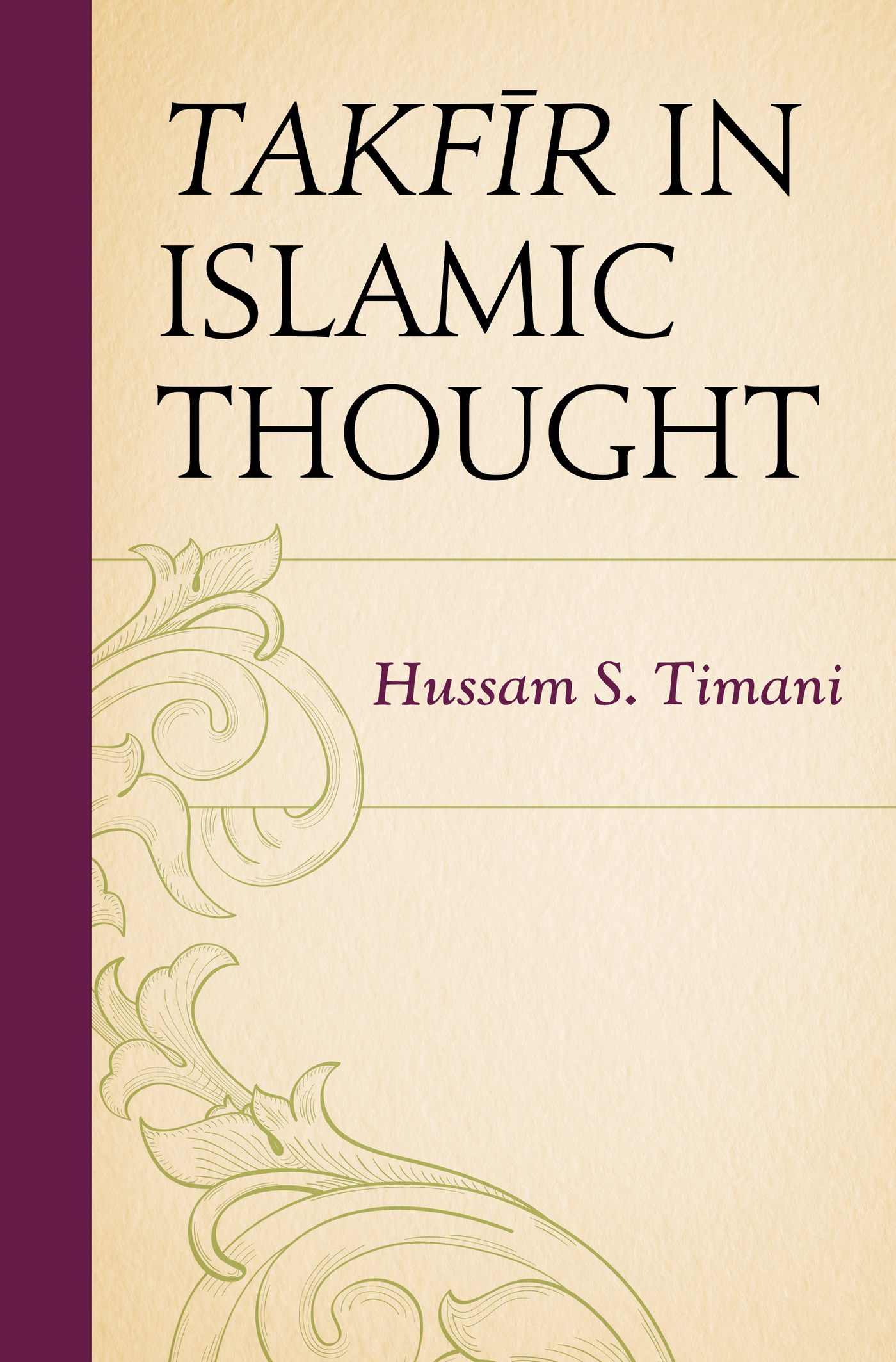Takfr in Islamic Thought
Takfr in Islamic Thought
Hussam S. Timani
LEXINGTON BOOKS
Lanham Boulder New York London
Published by Lexington Books
An imprint of The Rowman & Littlefield Publishing Group, Inc.
4501 Forbes Boulevard, Suite 200, Lanham, Maryland 20706
www.rowman.com
Unit A, Whitacre Mews, 26-34 Stannary Street, London SE11 4AB
Copyright 2018 by Lexington Books
All rights reserved. No part of this book may be reproduced in any form or by any electronic or mechanical means, including information storage and retrieval systems, without written permission from the publisher, except by a reviewer who may quote passages in a review.
British Library Cataloguing in Publication Information Available
Library of Congress Cataloging-in-Publication Data
Names: Timani, Hussam S., author.
Title: Takfr in Islamic thought / Hussam S. Timani.
Description: Lanham, Maryland : Lexington Books, [2017] | Includes bibliographical references and index.
Identifiers: LCCN 2017033324 (print) | LCCN 2017035165 (ebook) | ISBN 9780739194263 (Electronic) | ISBN 9780739194256 (cloth : alk. paper)
Subjects: LCSH: Kufr (Islam) | Islam--Doctrines.
Classification: LCC BP166.785 (ebook) | LCC BP166.785 .T56 2017 (print) | DDC 297.2/2--dc23
LC record available at https://lccn.loc.gov/2017033324
 TM The paper used in this publication meets the minimum requirements of American National Standard for Information Sciences Permanence of Paper for Printed Library Materials, ANSI/NISO Z39.48-1992.
TM The paper used in this publication meets the minimum requirements of American National Standard for Information Sciences Permanence of Paper for Printed Library Materials, ANSI/NISO Z39.48-1992.
Printed in the United States of America
Acknowledgements
This book would have been impossible without the help and support of many individuals and institutions. I want to start by thanking the Provost Office at Christopher Newport University (my academic home) for granting me sabbatical and Faculty Development Grants to conduct and complete the research of this project. Many thanks also go to Dr. Lori Underwood, the Dean of the College of Arts and Humanities at my institution for her unwavering support during the research and writing of this book. I am grateful to my colleagues at the Department of Philosophy and Religion for their suggestions and guidance. I am more than thankful to the manuscripts anonymous reviewers whose comments, feedback, and suggestions helped me articulate my ideas more professionally and coherently. I am grateful to my students whose questions and curiosity to know more about takfr helped me broaden my understanding of the concept. I must also thank the staff at the libraries of Harvard, Princeton, Yale, and McGill for allowing me access to their Arabic manuscript collections. Sarah Craig, my editor at Lexington Books, guided me patiently throughout the writing process. I thank her for her guidance and professionalism. Last but not least, I am forever indebted to my wife, Professor Diana Obeid, whose comments and feedback helped improve the manuscript, and to my daughters, Taleen and Teah, for being patient and understanding.
Introduction
Takfr,
For this reason, a work on takfr in the English language is long overdue and necessary for understanding the origin, history, and meaning of the precept as well as the groups that have adopted it. This theological concept, which has been widely discussed in books written mainly in the Arabic language, has yet to make its way to Western audiences. This book attempts to fill this gap and will contribute to the fields of Islamic and Middle Eastern studies.
The ongoing debate surrounding takfr is none but proof that the various Islamic schools of law, theological schools, and sects have offered a variety of interpretations on the topic. Throughout the centuries, Muslim theologians, jurists, and others have written volumes explaining the theological meanings of takfr. In their writings, they also have warned against independent interpretations of the concept, especially the interpretations against whom takfr should be declared. Although there had been a wide opposition to takfr in early and medieval Islam, the concept, rather than dying out, has spread wide and far in the Muslim world to the extent that it has become a common tool among some modern and contemporary Muslim groups to declare the other infidel.
Muslim extremist groups and militant leaders across the Muslim world, and in some Western societies as well, have called for the institutionalization and politicization of this phenomenon.
Takfr, when practiced against another Muslim, is one of the most dangerous and extreme practices in Islam, for it strips the one who is declared a kfir of all legal and civil rights (i.e., inheritance, child custody, and marriage to a Muslim) and justifies the shedding of his or her blood.
This book provides an overview of the theological views on takfr in classical and medieval Islamic thought, explores the Islamic context of the concept, and considers the following questions: in what context does the term appear in the Qurn and adths (the sayings of the Prophet Muammad)? In what circumstances did Muslim theologians engage in takfr, and what were the social, religious, theological, and political implications on the society? How did the meaning of takfr evolve in classical and later Islamic theology, and what justifications did prominent medieval Muslim theologians and jurists provide for declaring other Muslims kuffr?
Chapter 1 discusses the meaning and origin of takfr and the early Islamic attitude to the concept. This chapter attempts to establish the historical roots of the concept and how the Prophet Muammad understood it and used it. Chapters 2 and 3 provide a survey of takfr in early and later Islamic theology and demonstrate how and why the concept became an important issue to be discussed in theological schools. These chapters also demonstrate how the various interpretations of takfr were the product of a classical theological debate on the differing views of the concepts of mn (faith) and islm (submission to the will of God). Finally, chapter 4 addresses the views of two prominent medieval theologians, Ab mid Muammad al-Ghazl (d. 1111) and Taq al-Dn Amad ibn Taymiyyah (d. 1328). This chapter demonstrates how al-Ghazl and Ibn Taymiyyah validated the practice of takfr against other Muslim sects and groups and how they differed in their interpretations of the concept.
Notes
The idea to write about takfr emerged after presenting a paper on the takfr in the Kharijite thought at an international conference entitled Takfir: a Diachronic Perspective, in Madrid, Spain in 2011.
See, for example, Ghlib asan al-Shbandar, L Takfr f al-Qurn (Beirut, Lebanon: Dr al-Hud, 2009).
Ibid., 5.
Ibid.
Ibid.
See, for example, Abd al-Munim Muaf almah, Qawid f al-Takfr (Amman, Jordan: Dr al-Bashr, 1994); Mlik Mutaf Wahb al-mil, hirat al-Takfr f al-Fikr al-Islm (Beirut, Lebanon: Dr al-Hd, 2007); Isml b. Amad al-Bust, Kitb al-Bath an Adillatal-Takfr wa al-Tafsq (Koln., Germany: Al-Kamel Verlag, 2009); u al-Khatb, awbit al-Takfr (Beirut, Lebanon: Dr al-Burq, 2007); Ghlib asan al-Shbandar, L Takfr f al-Qurn (Beirut, Lebanon: Dr al-Hud, 2009); Mamd Salm Ubaydt, Qaiyyat al-mn wa al-Takfr f r al-Muslimn (Amman, Jordan: Dr al-Bashr, 1996); Rifq Zhir,

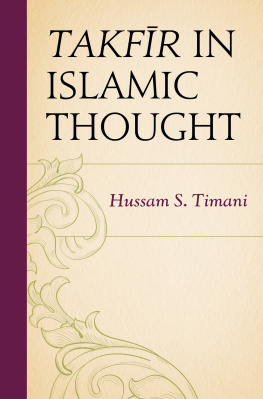
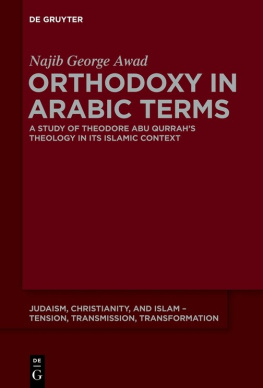

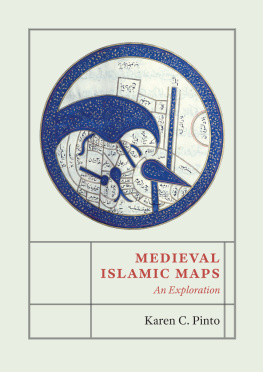
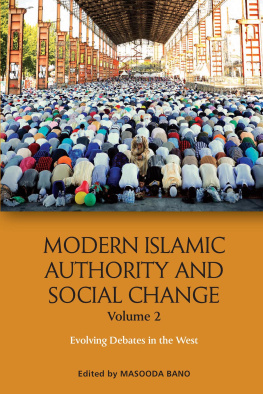


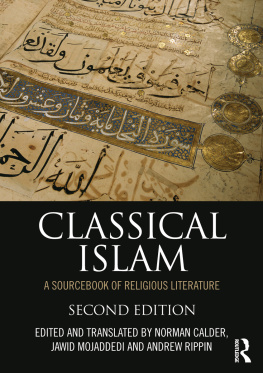
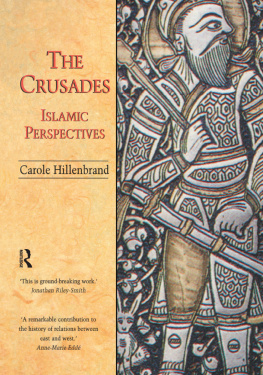
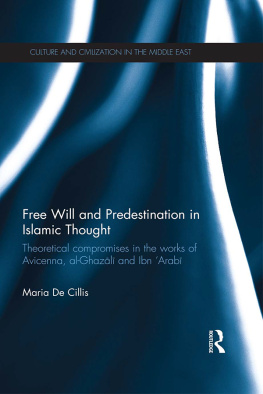
 TM The paper used in this publication meets the minimum requirements of American National Standard for Information Sciences Permanence of Paper for Printed Library Materials, ANSI/NISO Z39.48-1992.
TM The paper used in this publication meets the minimum requirements of American National Standard for Information Sciences Permanence of Paper for Printed Library Materials, ANSI/NISO Z39.48-1992.